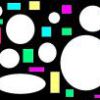 11
11Read at your own risk [3]
for Q1 i think u have missed a 2
it is 2qd=D though that doesnt make much difference to your doubt[2]going nuts due to boards :(
sorry dint see the book
 106
106im posting the full answer given in HCV..
If the charges on the two atoms are q and -q,
then q(1.0*10-10m) = 3.4*10-30C-m
or, q = 3.4*10-20 C
Note that this is less then the charge of a proton. Can you explain, how such a charge can appear on an atom
the one in bold is the exact answer given in HCV...
 106
106i dont know... in HCV it is written that:
A combination of two charges +q and -q separated by a small distance d constitutes an electric dipole. the electric dipole moment of this combination is defined as a vector
p = qd
 11
11very sorry i dunno what lead me to talk like that :(
sorry if it confused you too :(
 11
11another wild one
it may be due to hydrogen bonding
 106
106question edited it is HCl molecule ... toh H-bonding kahaan se aaya?? lagta hai Verma sir bhi bahut kuch chemistry padhte honge..[3]
 1
1wats the ans fro the second one ?
 106
106q/4πε0d2 towards the charge q
 11
11IN QUES 2
HINT
APPLY GAUSS LAW BY IMAGING NEW SURFACES AND BANK ON SYMMETRY
 9
9q1 see every molecule in dipole isnt fully polarised
 33
33For second it is q/4πε0d2 towards q
since cube is conducting so net field inside cube is zero...
so if field due to q is q/4πε0d2 away from q.. so net field due to cube should be q/4πε0d2
towards q to make it zero..
 106
106thx priyam and cele.. emperor 2